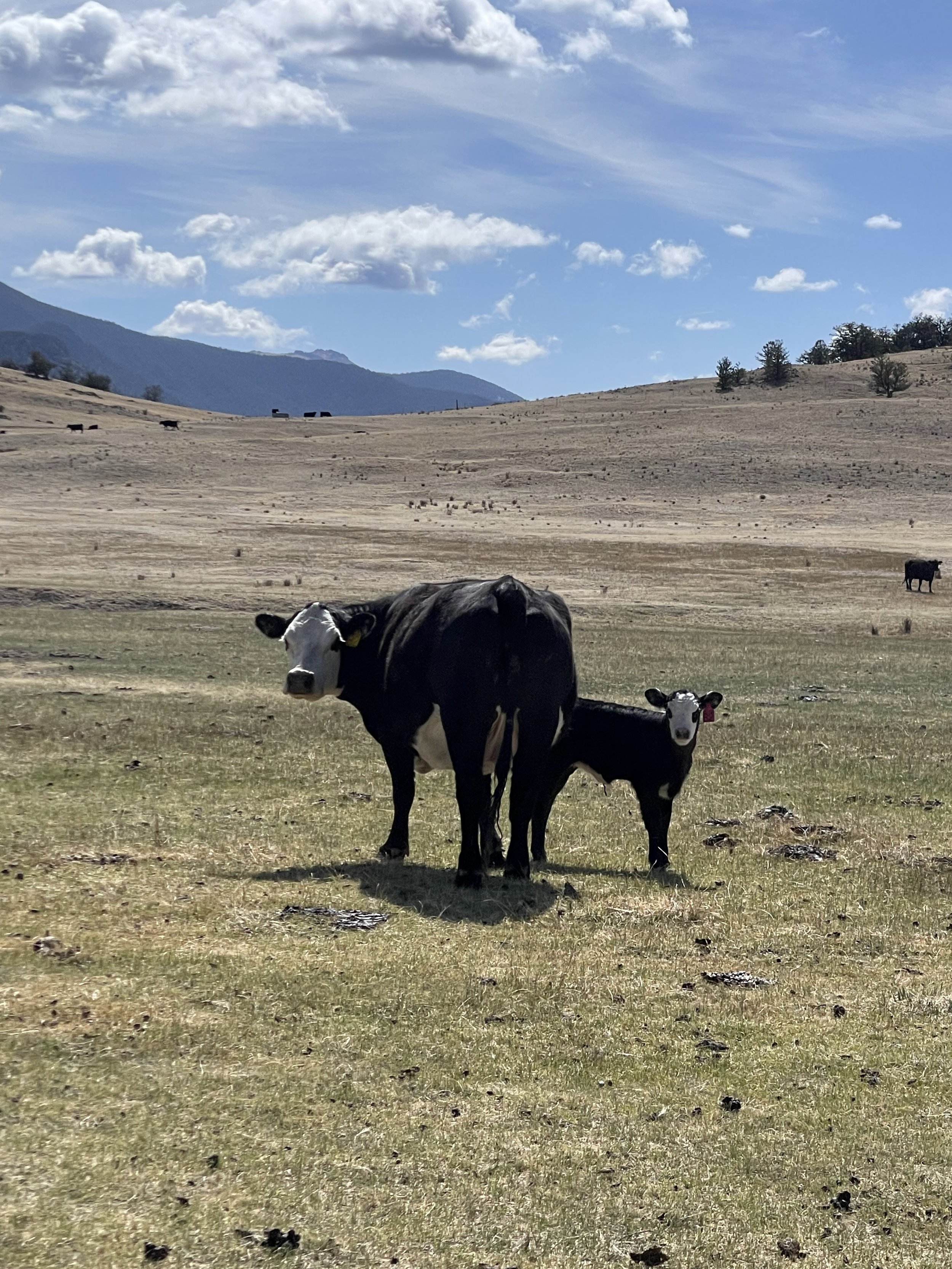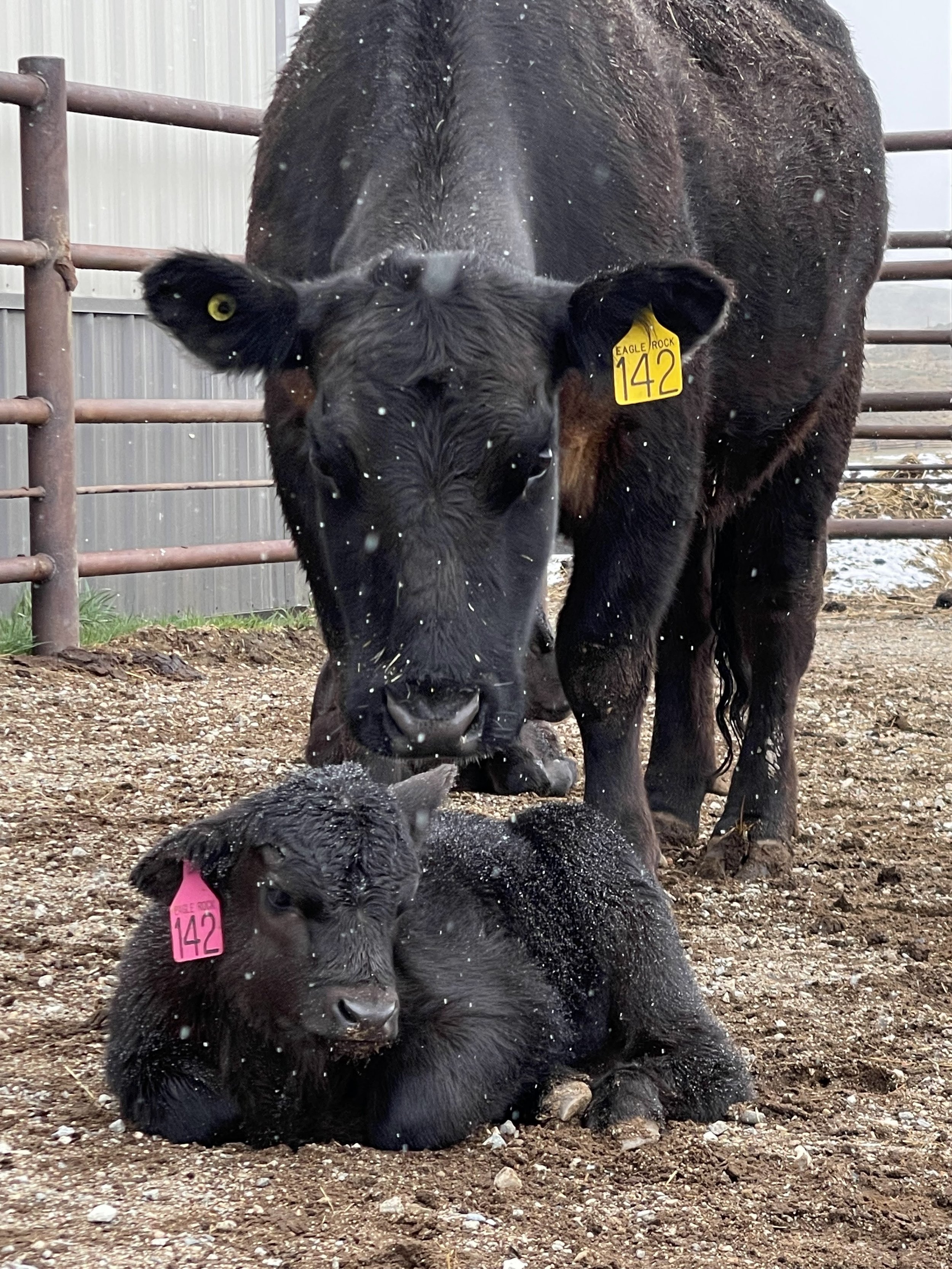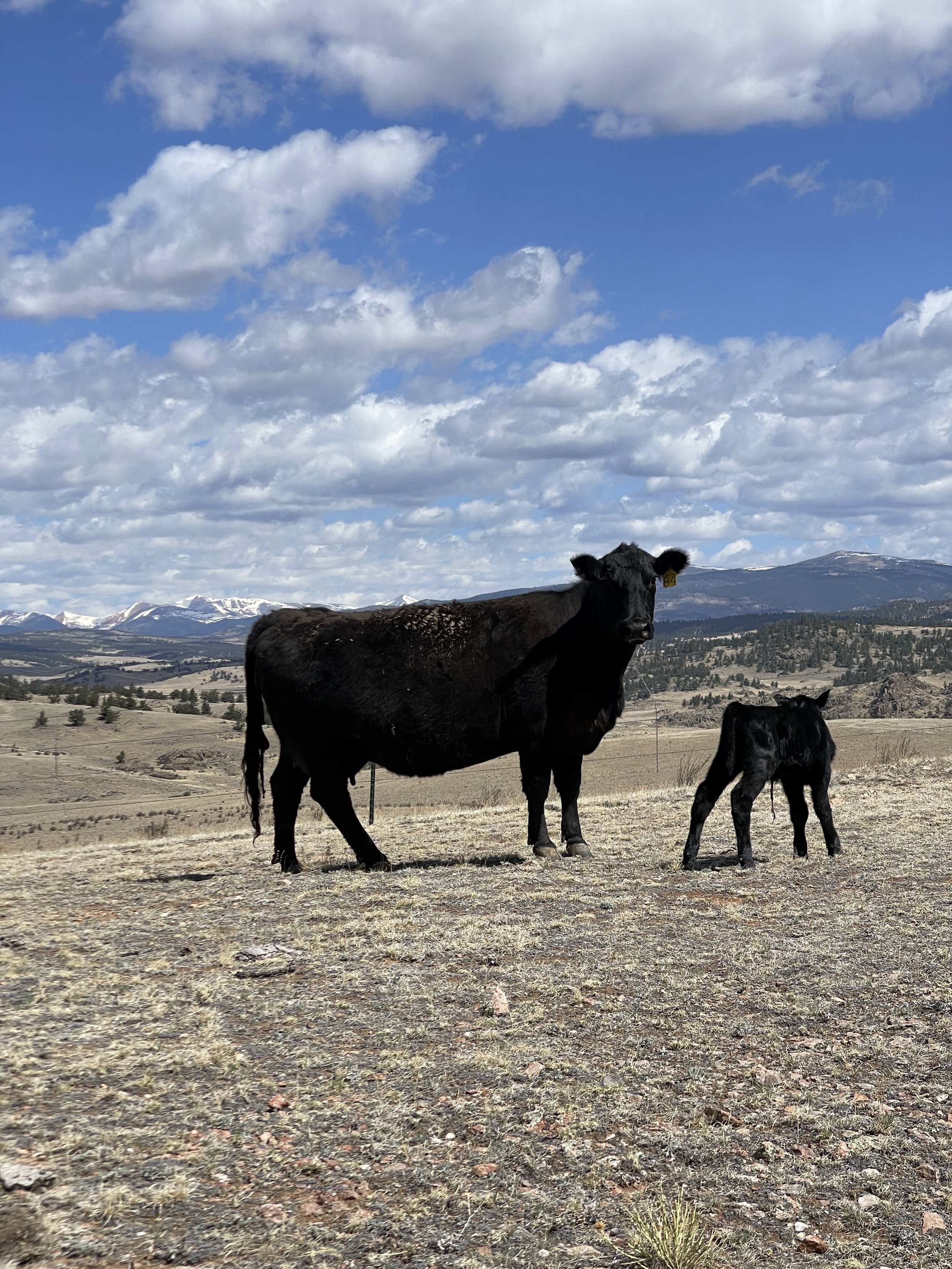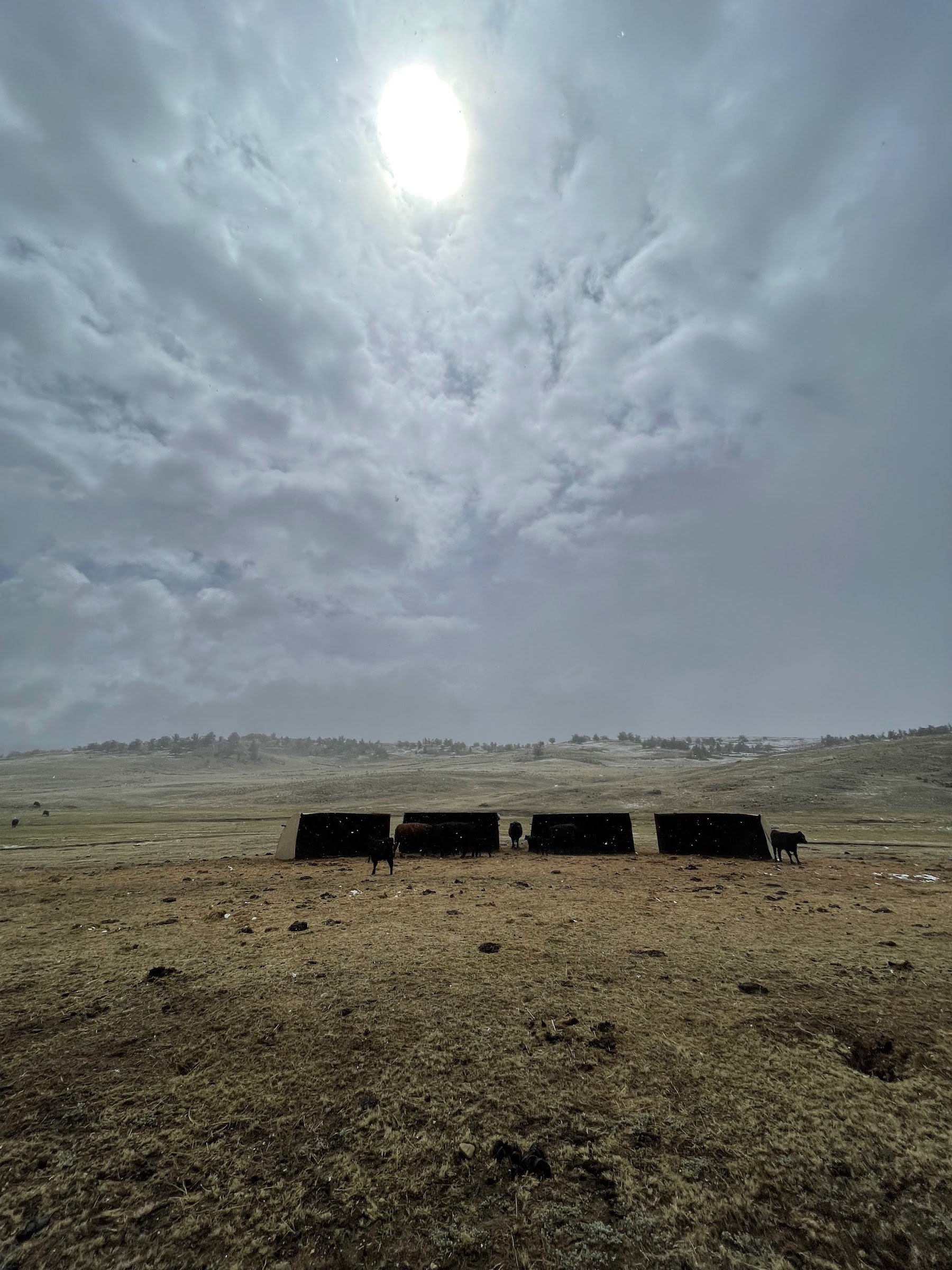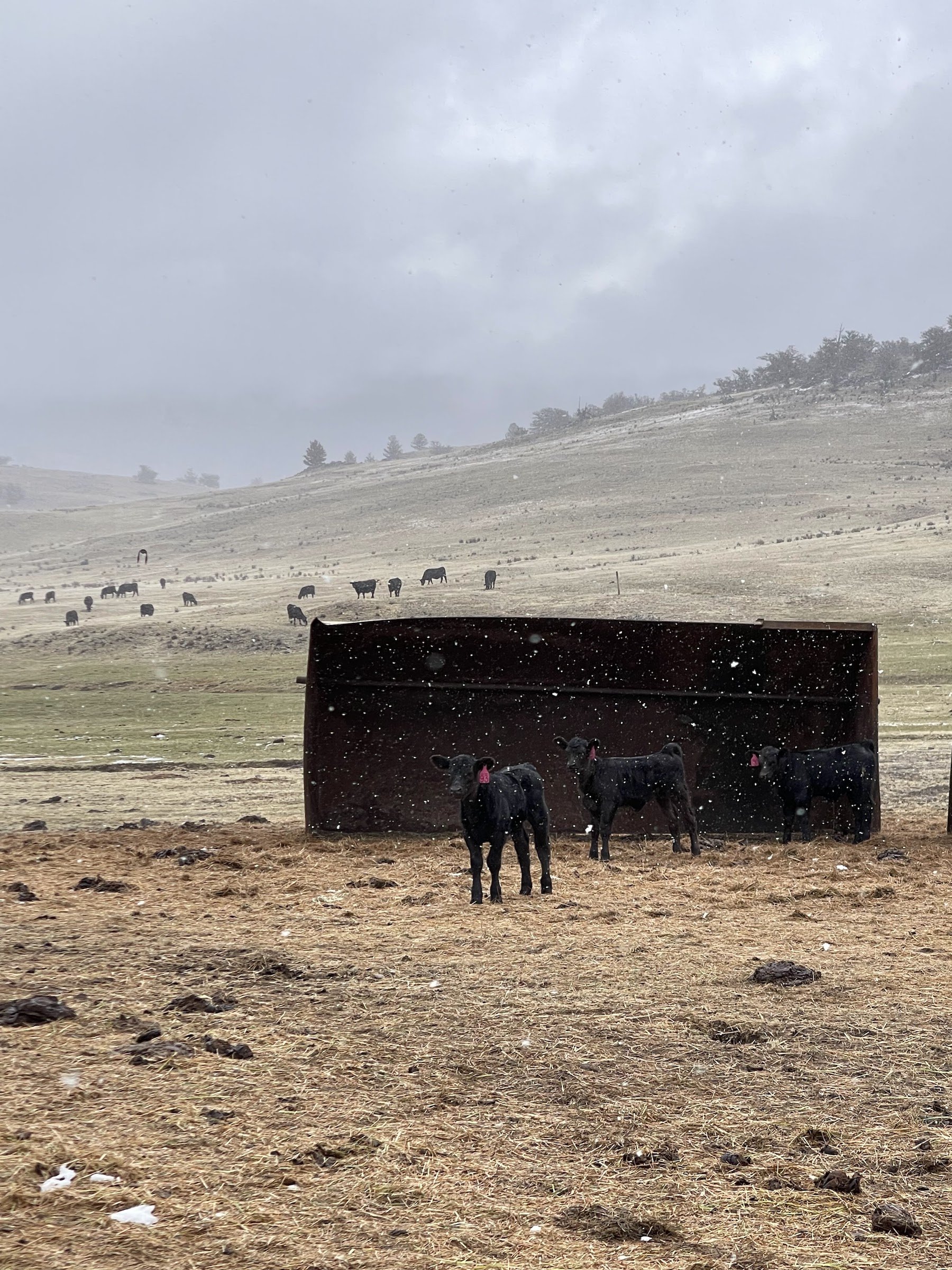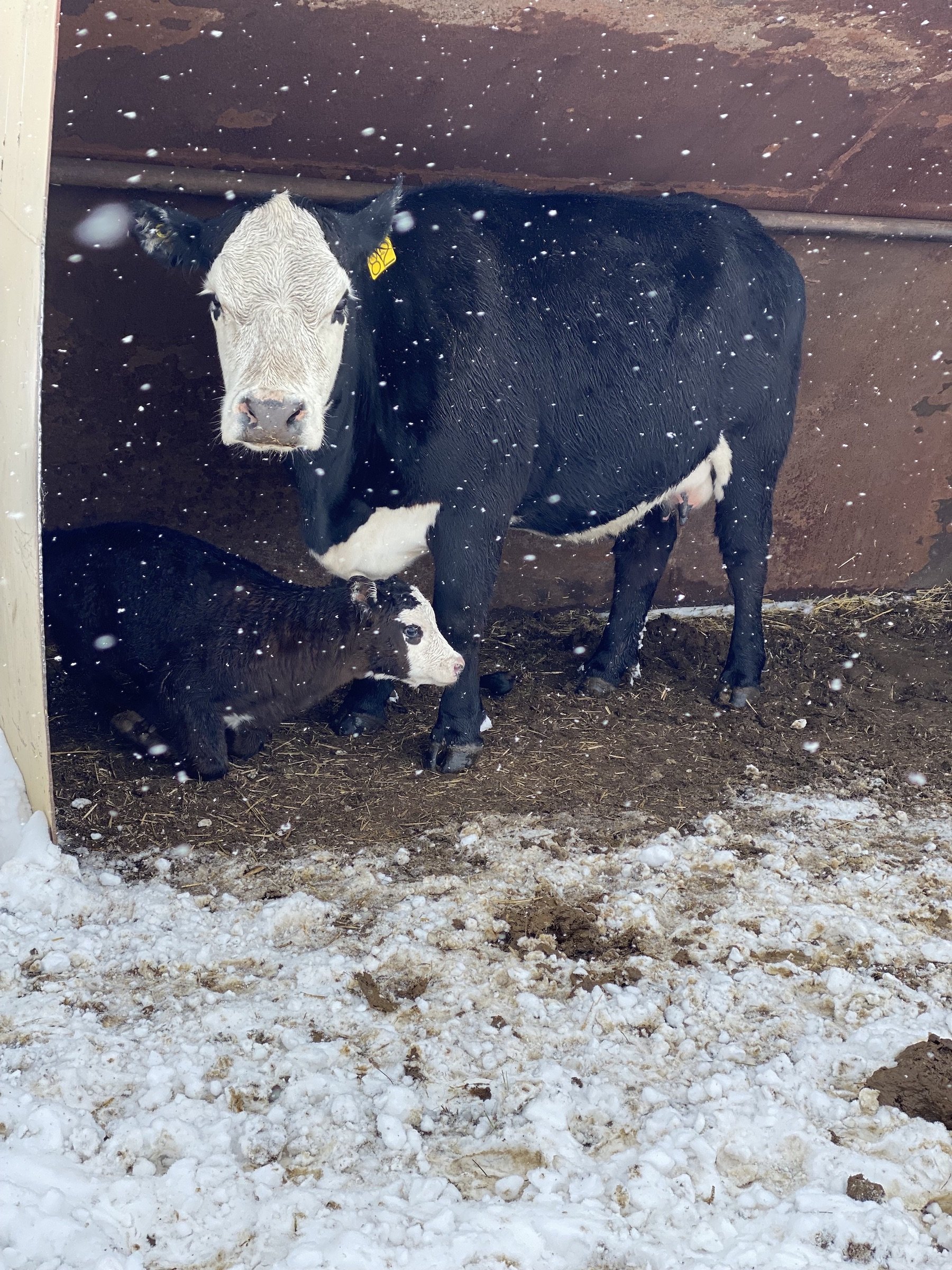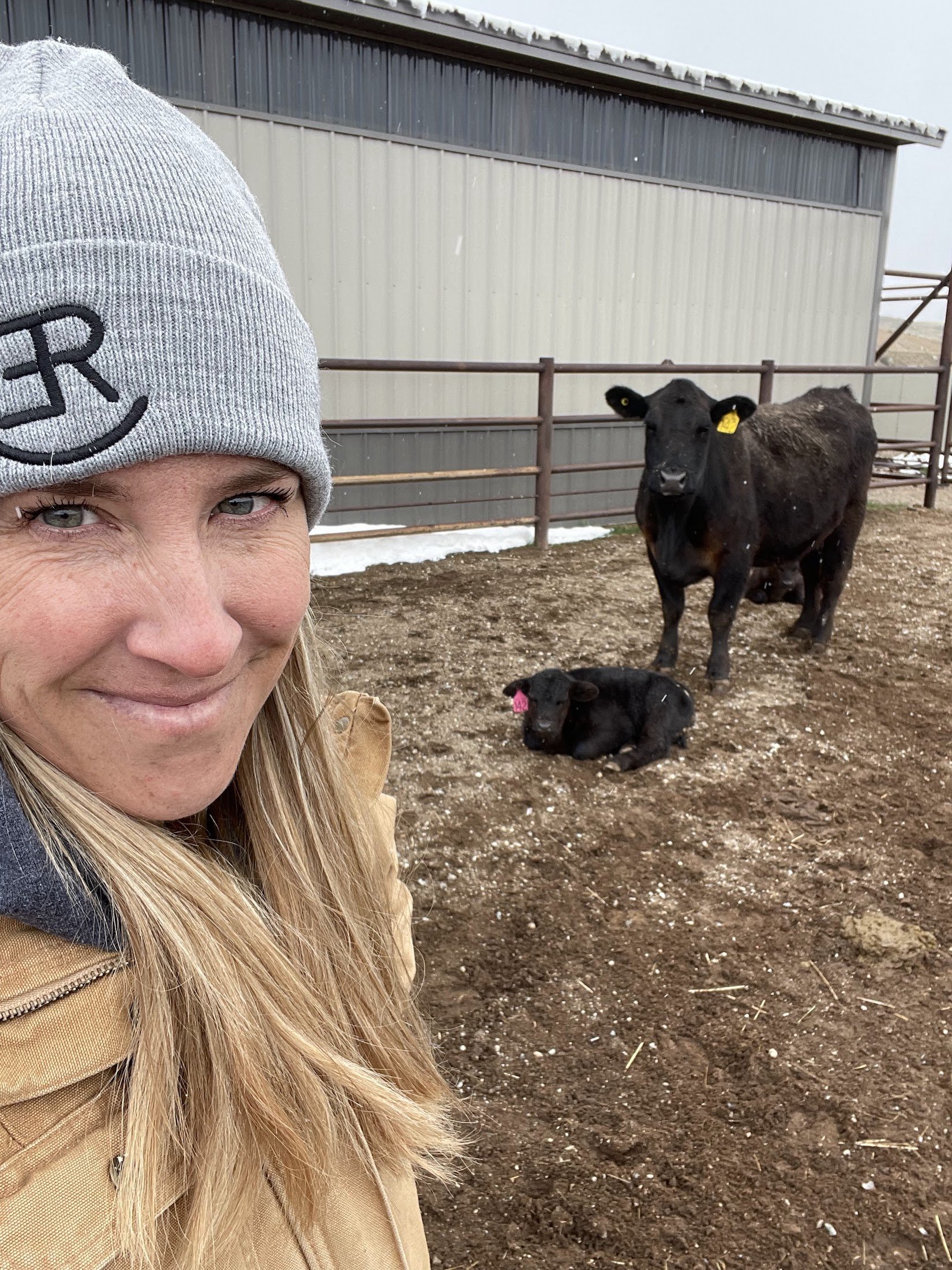How We Care For Our Cows During Calving Season
We’ve been in full calving mode the last few weeks! It’s been amazing to welcome all these new calves into the world. We are about eighty percent through the process with our herd, and we look forward to meeting the rest of our new calves shortly.
We shared glimpses of ranch life with families on our calving tour recently. They were able to see many “freshies” being loved on by their new mamas, and see many mamas, full of life, ready to birth. It was special to see how this event which is “common” to us was “magical” to our guests, as they saw baby calves for the first time! Seeing a baby calf take its first stand or steps is pretty momentous after all!
We seek to give our cows the highest quality of care in every facet of their life. We think it’s important in maintaining our standards for premium beef as well as for their own quality of life. Plus, we genuinely do care about our cattle and herd. ;)
Second Year Breeding
One of the ways we have chosen to care for our cattle is to wait until a heifer’s second year to start breeding. This allows for moms to be a little more mature and healthier during pregnancy and delivery. They are three years old by the time they deliver their first calf.
For our first time mamas during calving season, we keep them closer to the barn so we can keep an eye on them and assist with any issues, which are rare.
Other “proven” moms, who have had previous easy labors, are out in the pasture, and we can count on them to have healthy deliveries and calves.
The majority of our mamas have had very healthy, easy deliveries, but if you follow us on social media, you may have seen that we lost a set of twins this year. The first calf was breach which stalled labor, and likely kept the second calf constrained and exhausted for too long. We had to manually deliver the twins, and while they were both born alive; unfortunately, they did not survive. We were heartbroken, but we know that these situations are so few and far between, and we did everything we could to save the mama and her calves.
We have one other mama, Mary who had a retained placenta, and we are still waiting for her to deliver the placenta. Our vet has come to check on her, and we are hoping that as her new calf begins to nurse, she will release the oxytocin needed to allow her placenta to pass.
But aside from these two situations, the vast majority of our deliveries have been very uneventful.
Keeping Cows Warm
This last month we had sun, wind and SNOW during our calving season. In MAY! Our ranch is in the heart of the Rocky Mountains, and so this is not atypical, but we do try and go out of our way to make sure our mama cows are cared for in all situations.
With the anticipation of snow, we prepared specialized shelter for them in the pasture. We used an old oil tank that was cut into four pieces, so that each piece was a quarter circle - perfect to provide the shelter needed from the snow.
We brought in straw for the moms to have available to bed down their calves with. We also fed them extra hay so they could stay warm. It’s so important for cows to have enough hay to be able to stay warm. As long as they are eating hay, they can usually stay warm.
When the snow began to fall, we kept a close eye on the mamas. We would make sure that new calves were quickly elevated off the ground on hay. The mama cows are so wonderful and would usually guide their calves to the shelter and bed them down, but we would encourage them whenever needed.
Understanding a Typical Delivery
For the most part, we just seek to provide a healthy, safe pasture for the mama cows to deliver their babies. We frequently circle around the pastures to keep an eye out for new calves or mamas who look to be in labor. Every so often, we do our due diligence to attach a calf with its mom so we can tag it properly, but for the most part, we let nature run its course, and are excited to have a front row seat to it all.
A typical delivery, from the first signs of labor to a healthy baby calf, lasts about four hours. Once a mama cow is in active labor, the baby calf is born within the hour. If it looks like there may be an issue, we bring the cow into a portable corral where we can inspect and make sure all is well. When the calf is born, we also keep an eye on the calf to ensure that it nurses and gets the life-giving colostrum it needs within the first hour, and only assist when necessary.
While this season of calving can be intense on some days, we truly love it! It’s been a privilege to share this magical experience with other families during our calving tours. Bookmark this time for next years’ calving tours for your family or school! But you are welcome to schedule a ranch tour anytime. We’d love to show you around and how we care for our cows and introduce you to our favorite mamas and their calves.

